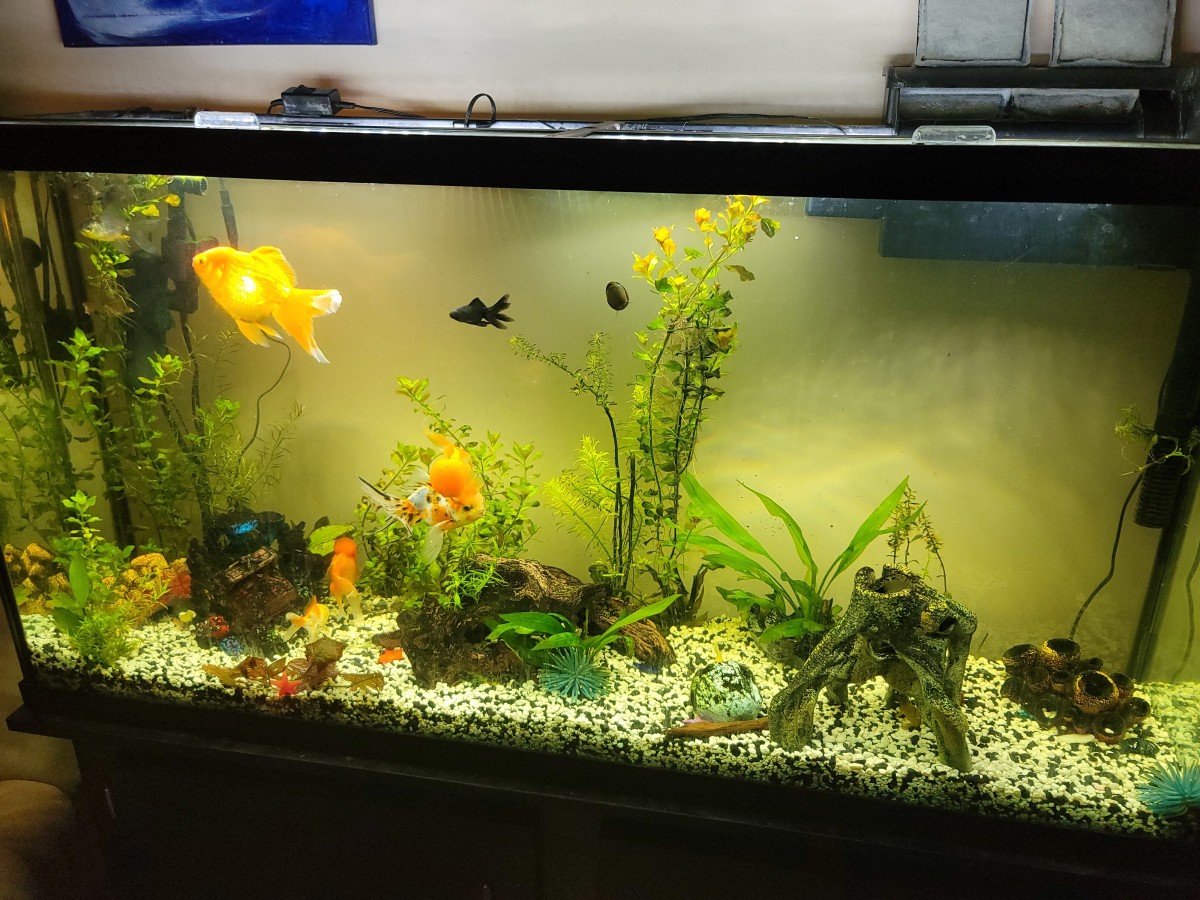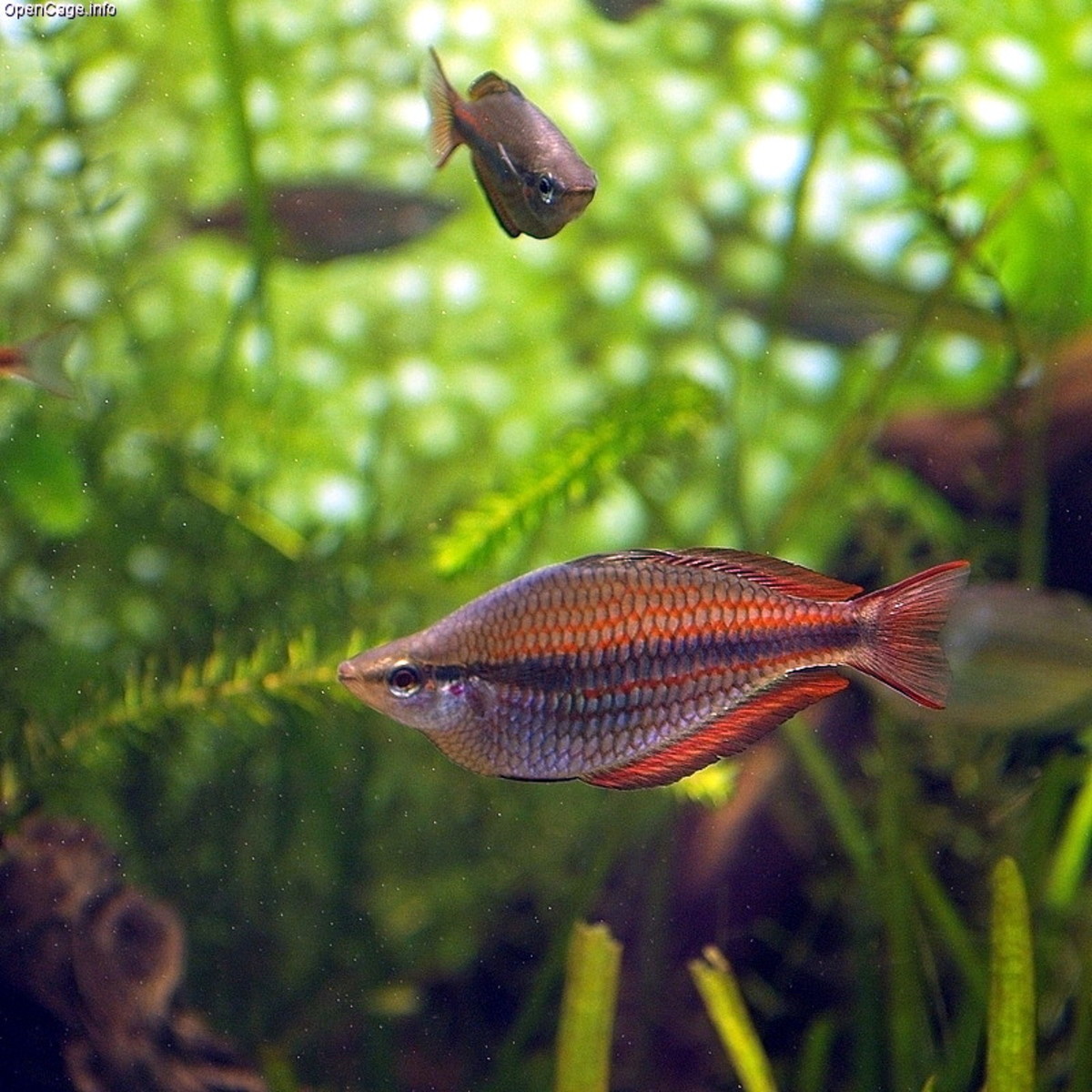THE NATURAL AQUARIUM, 1 MY JOURNEY TO THE DARK SIDE: CO2
CO2 is what plants need to grow.

The Journey Old Way, New Way
Let’s start of in a logical mode, shall we? Something is neither good nor bad because of its age. Nor is it true or false because of its age. The older I get the more I like this fact :/
Also, it is not true because science tested it. This there were true were true before science tested them, and, science hasn’t tested everything and, indeed, can’t test certain things.
What do I mean by that? Science tests things that recur over and over again. Science cannot test things that occur only once or twice. It cannot test theories of origins of most things.
We don’t need to do that here, however, just be aware that science analyses fairly well within its presuppositions but not well outside of them nor does it synthesize well, that it, it takes apart (“analyze”) but does not often put things together (“synthesize”).
All of that aside, think back to the time 150 years ago when people started to collect fish and keep them in buildings. The term “scientist” meaning a person who searches for naturalistic explanation for things, was a newly coined word.
People observed what appeared to be the sudden and spontaneous explosion of life such as in wine fungi causing fermentation or bacteria suddenly appearing, as if from nowhere, in a nutrient solution, say, on food, or in a nutrient broth. Pasteur proved his point and said “Omne vivum ex ovo,” living things only come from living things, the law of biogenesis, science found a major principal. If we purify things and protect them from bacteria and fungia, they do not grow things.
People had fish dying from any number of diseases and purifying the water and the tank prevented them from dying. Science had analyzed the situation well, but did not synthesize an organic, self-balancing system that could incorporate more types of organisms to make an extremely complex eco-system. That would take more than one hundred fifty years.
Move forward to 1965 when a Junior High School boy asked his mom if he could have a fish tank. The store tells him how to set up and run the tank. Clean the water frequently, changing not less than 25% per month, per week if you want really healthy fish. Use gravel on the bottom and use a syphon to remove the detritus with each water change. Change the charcoal and the filter material, and the amino chips every time you do a water change. This works. Removing nutrients prevented diseases. But when diseases did strike the tank, there were often devastating, or, if you caught them in time, you could use a medication which could cause several problems of their own. So, after water treatment, you needed to change the water again.
But what of plants? The boy purchased plants repeatedly and, plant after plant promptly died. Not able to acquire the kind of aquarium he wanted, he quits after several years and determined to do this again later in life.
Do you want aquarium plants?
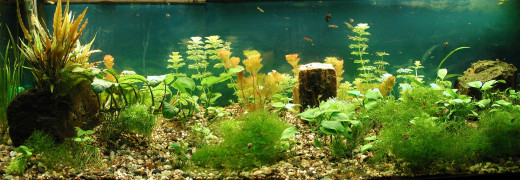
First Decision
Here is the first and major decision you will need to make: Do you want pretty air bubbles, and all the other equipment and treatment in the old way of aquarium maintenance, or an easy care, eco-system that rarely needs care and the most frequent thing needed is plants trimmed? It's your choice.
Step One, CO2
We move, more or less in the middle of the journey, well more than a decade later. Under gravel filters were thought to provide a better answer than the old canisters set in the corner and covered with an artificial rock, and they did work better. Even canister filters started to become popular if you could afford them, change the water periodically, usually 25% per week, cover the under gravel filter with, what else? Gravel!
Add more filtration, perhaps better results were possible. A corner box filter operates, as before using air bubbles. Activated charcoal, Amino Chips, filter fiber (a cotton like synthetic fiber to physically filter the water), again, then water treatment chemicals, antibiotics, antifungal medications, and air hoses, bubblers, were either an alternative, or, if needed, added to the under gravel filter, and on and on it went. I actually daisy chained the air stones together so bubbles crossed the entire back of the tank. It looked great. I love bubbles in a fish tank.
I loved the tank but had a hard time keeping my plants alive, and not too periodically, I had catastrophic failures. For instance, I had a tank filled with 12 large angle fish I had raised from fry I had acquired from a breeder. There were beautiful fish that graced the tanks swimming in their school and were candy for the eyes. Then, at a large commercial national pet store I bought a pair of loaches that I had never seen before, beautiful light blue body with yellow tails. I put them into the tank and they had Ick, a fungal fish disease then soon killed every single fish in the tank.
Push the reset button and hard boot the system.
Different fish different set up different plants. Everything went a bit better this time, I learned you can use a salt bath for new fish to keep Ick out. Simply dip new fish into a bowl with salt water for about 5 seconds, and you are all set. The difference in salinity (concentration of salts) produces a salinity gradient that the osmo-regulators in the fish can handle for fifteen to twenty minutes, but fungi and bacteria cannot stand for more than a few seconds. (The reverse also works, salt water dipped in fresh water.)
Feeling a bit like Mr. Bean, smiling at his success, the tank went well for several weeks and I even added a more complex set of bubblers to display a beautiful stream of bubbles at the back of the tank. This time the plants died even quicker than before. So, like Mr. Bean I reluctantly scooped out dead plants for several months until my air pump died.
“Great!” I thought in a typical Bean fashion grumbling, “now I will have to go buy another air pump.” The under gravel filter was also enervated by air, the rising bubbles inside the tube draw the water to the top, so it stopped working also.
Money was a bit tight so I delayed replacing the air pump, no bubbles, no filter but lo and behold, the plants stopped dying. Even the rooted plants came to life as they had never done before. They actually started to grow. We were thinking about the water quality all wrong.
Pasteur was right, remove the nutrient and nothing will grow, and we were removing the nutrients the plants and bacteria needed to grow, feeding the fish and then removing the nutrients all the other biology needed to stabilize the system.
Endler's Livebearer
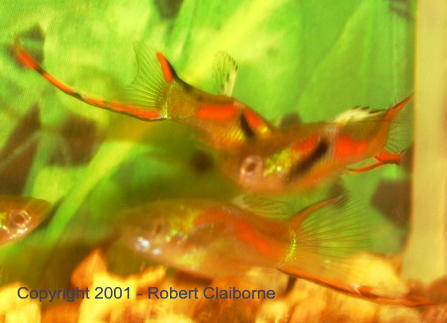
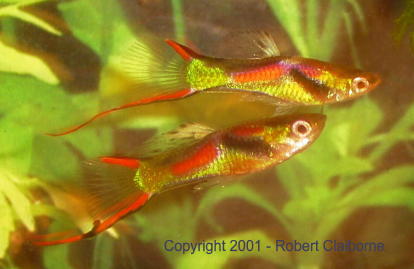
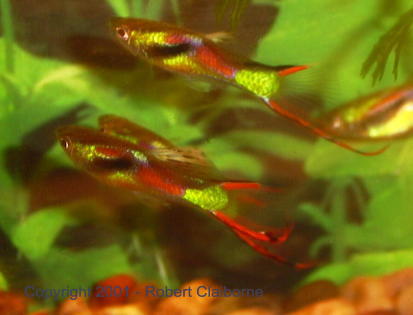
What was Going On?
Hmm.
What was going on?
Conventional wisdom tells us we need air exchange for the fish so bubblers and bubble stones provide this oxygen.
How about plants? What do they need? They need carbon dioxide, lots of it, in fact, more than they can get from the atmospheric air.
Think about this: If there is sufficient CO2 in the air to make the plants grow, which is clearly the case, then there is obviously not enough CO2 in the air! So, where was the CO2 coming from?
It was coming from the detritus in the bottom of the tank.
The bubble stone exchanges oxygen for the carbon dioxide in the tank (there is already too much nitrogen in the tank from fish waste), and reduces it to the levels found in the atmosphere, varying between 0.0280% and 0.039% according to many factors.
Yes, that’s right, it is measured in parts per million, and, as a concentration those numbers would read 0.00028 and 0.00039.
There isn’t much in the air at all.
Additionally, the dispersing tip at the end of the inflow coming from a canister filter spreads the incoming water across the surface of the tank and added to the oxygen exchange. (Don’t even think of the bio-wheel style which oxygenates the water even more.) I took that dispersing end off so the water could drop straight into the tank and the surface could remain stable, helping to hold in CO2.
Not at all good you might say, carbon dioxide is a poison to the fish!
Well, yes, if there is too much and you are an animal this is true, however, if you are a plant (granted, it is unlikely that you are a plant) this is the stuff you photosynthesize into the sugars you need to grow. Just add water and light.
However, it turns out the volume of CO2 needed is extremely high when compared to what is in the atmosphere or in the water.
My plants were doing so well and looked so good that I never replaced the bubblers, in fact, I eventually threw the stones away and my plants kept growing. . .
The under gravel filter had not worked in some time and the rooted plants were growing rapidly, to the point of needing weekly trimming. I realized that the bacteria in the soil were creating ammonia from the nitrogen in the tank and the roots of the plants prefer that form of nitrogen to other forms. The bacteria were creating fertilizer, but even with this the fish were doing just fine.
That was a great step one toward creating a more natural tank.
What I didn’t quite realize at the time was that the under gravel filter was great for removing the nitrogen from the tank and very poor for allowing roots to absorb ammonia. The same bacteria that convert ammonia into nitrate and nitrite so it can escape into the air in an aerobic environment did the opposite in an anaerobic environment!
So, if oxygen is present ammonia decreased, of oxygen is missing, as it was when I turned off the under gravel filter, ammonia was created and rapidly absorbed by the plant roots. Wow! What a design!
This was the first big step in growing plants: Turn off anything that makes bubbles!
(I had a secretary once that, after I set up a 100 gallon aquarium kept repeating, “you need bubbles” or “the fish need bubbles,” for months on end, I teased her by pouring my tea into the tank to watch her eyes roll.)
I really like aquarium gravel. I used the largest I could find, then I mixed in small river washed granite pieces, sometimes called “pea gravel” to make the appearance a little more bold. When I realized that the detritus in the bottom of the tank (fish droppings and dead plant materials) was also creating CO2 I reduced the amount of cleaning I did in the bottom to increase the CO2, which also helped. Additionally, the larger gravel helped this, I thought, since it was allowing it to go below the surface and out of site. What I didn’t realize was that the gravel was also allowing more oxygen into that detritus so it wasn’t breaking down as fast.
Later you will learn why I took all that out and now use only swimming pool filter sand, which doesn’t allow the detritus to enter but makes a complete anaerobic bottom, that is, it doesn’t allow oxygen into the substrate. Turns out, this preserves needed nitrogen in the tank...

